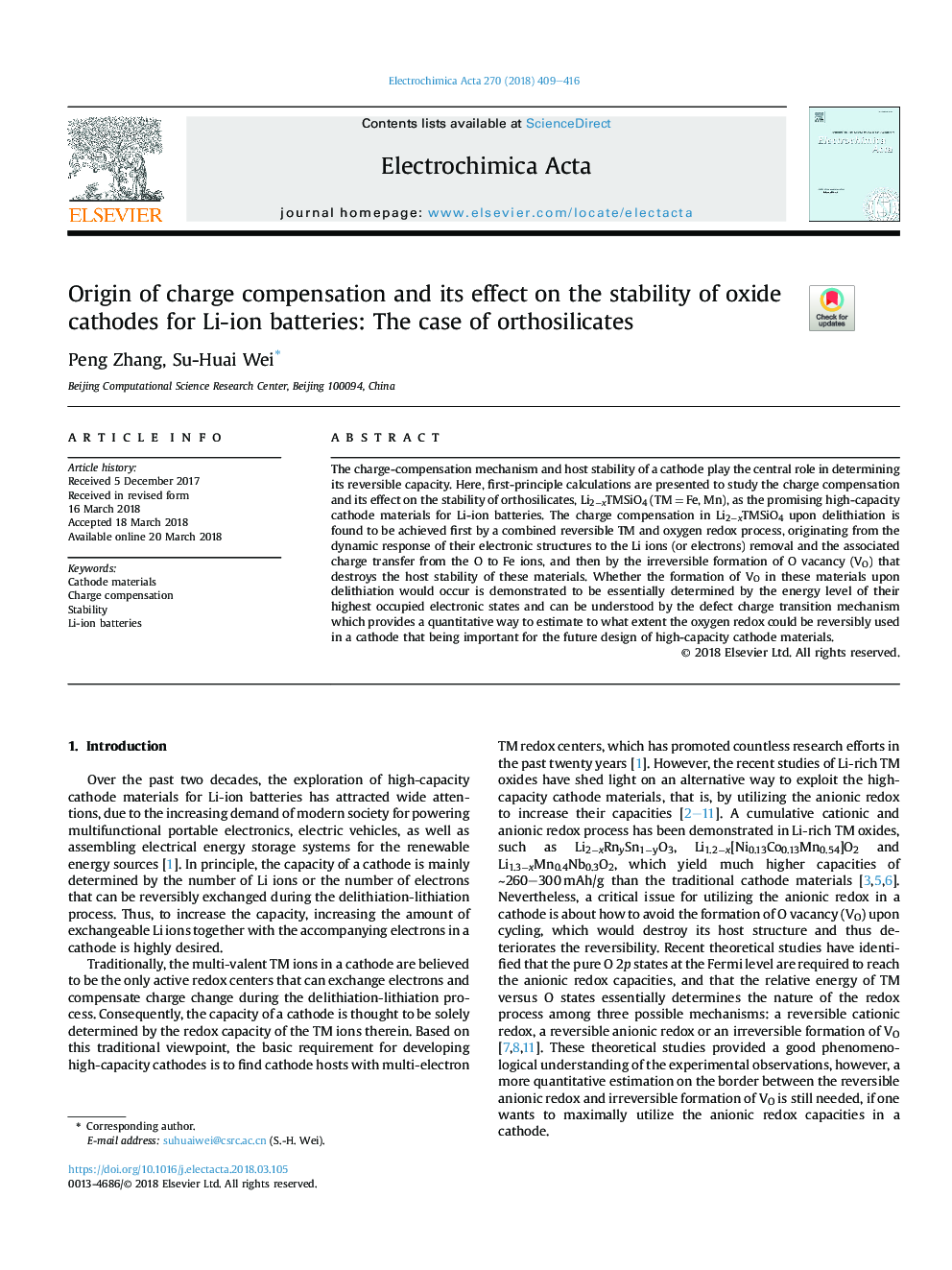| Article ID | Journal | Published Year | Pages | File Type |
|---|---|---|---|---|
| 6603478 | Electrochimica Acta | 2018 | 8 Pages |
Abstract
The charge-compensation mechanism and host stability of a cathode play the central role in determining its reversible capacity. Here, first-principle calculations are presented to study the charge compensation and its effect on the stability of orthosilicates, Li2âxTMSiO4 (TMâ¯=â¯Fe, Mn), as the promising high-capacity cathode materials for Li-ion batteries. The charge compensation in Li2âxTMSiO4 upon delithiation is found to be achieved first by a combined reversible TM and oxygen redox process, originating from the dynamic response of their electronic structures to the Li ions (or electrons) removal and the associated charge transfer from the O to Fe ions, and then by the irreversible formation of O vacancy (VO) that destroys the host stability of these materials. Whether the formation of VO in these materials upon delithiation would occur is demonstrated to be essentially determined by the energy level of their highest occupied electronic states and can be understood by the defect charge transition mechanism which provides a quantitative way to estimate to what extent the oxygen redox could be reversibly used in a cathode that being important for the future design of high-capacity cathode materials.
Related Topics
Physical Sciences and Engineering
Chemical Engineering
Chemical Engineering (General)
Authors
Peng Zhang, Su-Huai Wei,
